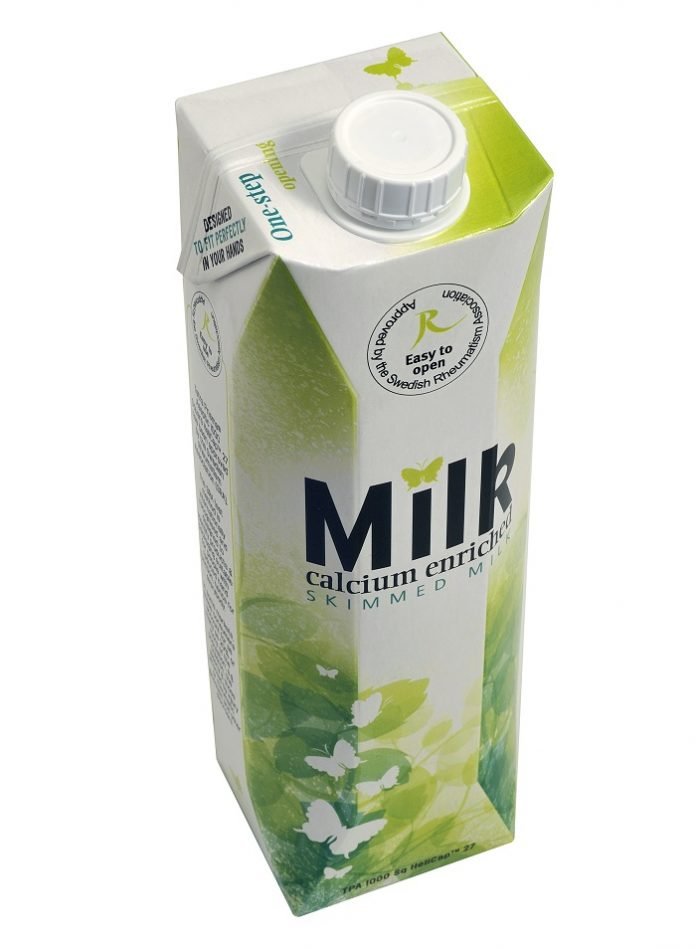Depending on a person’s lifestyle and state of health, easy access to food and hydration can range from desirable to an absolute necessity. Ability to meet consumer expectations and a social need is served by making packaging easy to access, which commercially is a serious issue because the number of long-lived people on the planet will continue its inexorable rise. Is industry prepared for what lies ahead?
It is just beginning to dawn on major brands in the food and beverages sector that pleasing a higher proportion of the consumer population will be key to sustaining competitiveness into the future.
Take for instance the United Kingdom – by 2050 it will have 19 million or so
over-65s and the only way is up for its 2013 tally of 11 million people coping with some form of disability. Nestlé has emerged as a champion of inclusively-designed packaging and is ready to roll out new packaging with the over-50s in mind, primarily focused on easy to read labels and better opening and closing mechanisms says Inder Poonaji, Nestlé’s head of health, safety and environmental sustainability.
Beverage cartons specialist Tetra Pak has a simple ethos: ‘By designing for people with special needs or disabilities we create products for all.’ The texture of a container becomes important as it can effect whether a person can hold a container to undo the cap. A closure needs to work for left-handers – an estimated 10% of the population – and for someone with stiff fingers or a weak wrist. According to Tetra Pak there are 72 million rheumatism and arthritis sufferers worldwide, so it’s no wonder the company aspires to win the Swedish Rheumatism Association’s approval, and the HeliCap one-step screw cap is but one successful example.
Capability changes according to the environment you are in,” says David Wiggins, a proponent of inclusive design formerly with Nestlé, now a packaging consultant. Good design, he says, comes to the aid of a parent with only one hand free to open a drink for a crying child, helps a child take its first steps towards independence and is the means by which a frail elderly person retains their independence and dignity.
Despite the survey finding by the UK consumer organization Which? that one in five consumers will switch brands if packaging makes it hard to access the contents, the problem is not yet judged big enough for most brand manufacturers to take action. Monitoring and measuring the cause and scale of defection could be a game-changer but is still work to be done says Dr Alaster Yoxall, principal research fellow at Sheffield Hallam University, expert in packaging design and ergonomics for an ageing population.
Poor design possibly can lead to malnutrition, concluded research into hospital packaging in Australia where 40% of the measured population, including hospital staff, was unable to open some packs of liquid nutrition supplement. Dr Yoxall wants to do similar research in Britain because if it could be argued that poor packaging can make people ill, it will bring the benefit case to the industry.

market
Dr Yoxall helped develop European and International Standards for packaging that opens with less force. The 2011 British Standards Institute technical specification (TS) DD CEN/TS 15945:2011 (Packaging – Ease of Opening – Criteria and Test Methods for Evaluating Consumer Packaging) is an annex in the coming ISO/CD 17480 (Packaging – Accessible Design – Ease of Opening). The conformance checklist covers closure torque, opening pull forces and color contrast for optimal readability of labels. Dr Yoxall hopes the new standard will be used in the National Health Service.
Water hydration can be self-administered by patients using a water-reservoir system and UK hospitals use around 35,000 such units every day according to Smart Seal, European inventor of a compatible, ‘absolutely spill-proof’ closure mechanism poised to enter that market.
Smart Seal CEO, Jan Erik Meidell, says, “Old people often do not hydrate as they do not have the forces to grab and lift up a bottle. With our valve technology and our suction activation, the water can be under pressure and is thus easier to drink.”
For the past five years The European Inclusive Design for Competitive Advantage Consortium, led by the University of Cambridge, has been helping companies, including Nestlé, to understand what a people-centred approach can do for their businesses and giving them tools for a successful transition. Besides the knowhow, for inclusive design to work as a corporate policy, the mindset has to be deeply embedded and “everyone must buy into the ethos” adds Dr Yoxall.
While Europe can point to pockets of good practice, Japan is a leader in the field of inclusive design. Characteristically, the Japanese packaging industry has acted together in response to the country’s shifting demographic landscape. As time goes on, millions more of the world’s population will be living for longer with the natural symptoms of the ageing process. Is it worth waiting to put a structure in place that will serve this growing customer base of shoppers with money to spend and time to compare brands?










